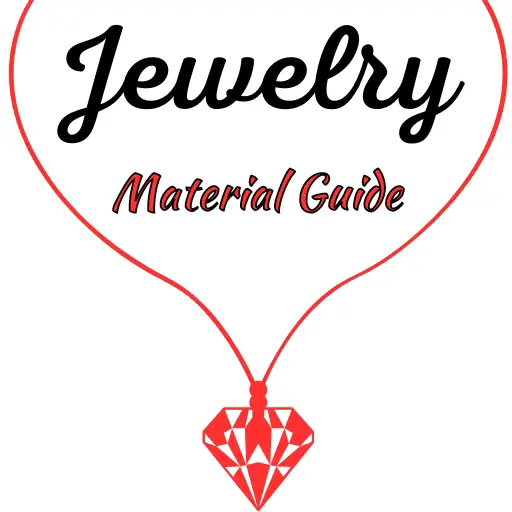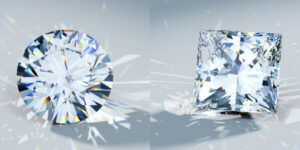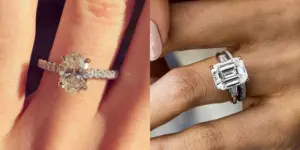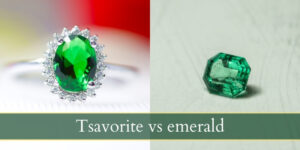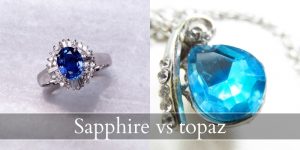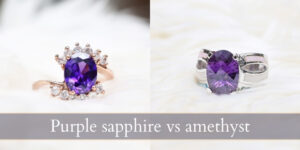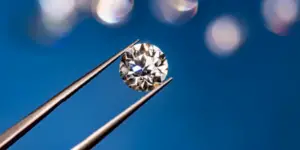Aquamarine gems are some of the prettiest light blue gems in existence. They color is made all the more impressive by the clarity these gems show. But what makes an aquamarine gem blue ? It has a very specific color, which isn’t really like other light blue gems.
Today we’ll explore how and why aquamarine becomes a beautiful light blue, whether there are any other colors you can find !
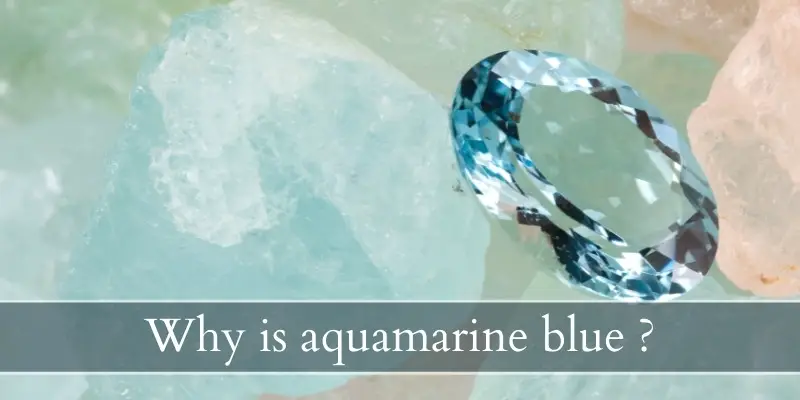
Why is aquamarine blue ?
Aquamarine is a type of beryl that owes its light blue color to trace amounts of iron, mostly in the form of Fe2+ ions. This gives aquamarine a very distinctive shade of blue that has a very slight golden hue to it, making it rather cyan than blue.
In general aquamarine is a very light colored stone, and the effect is amplified by its high clarity. However when the gem naturally has both Fe2+ and Fe3+ ions, the color turns darker, and a bit brighter with a better hint of green in it.
Aquamarine is often heat treated for a deeper blue
Aquamarine on the market is almost always heat treated to get a stronger blue. It cannot ever match a sapphire’s deep blue, nor a London blue topaz, not even a Swiss blue topaz. But it can definitely appear more colorful than a nearly-white icy blue, as is the usual starting point.
Heat treating aquamarines is a bit of a challenge, as any imperfections within the stone can be made much worse by heating. So fractures, bubbles, or inclusions can show up better or expand as a result. Aside from this, not all aquamarine is made equal. Some sources of rough aquamarine are prone to fracturing when heated, leading to smaller gemstone yields.
Read also: Does Rose Gold Tarnish ?
Beryl comes in many colors, including blue
Aquamarine is a type of beryl, which actually comes in many other colors. It all depends on what other trace amounts of other elements are present in beryl. Here are the most famous versions of beryl currently known. Some may be very familiar to you already !
Goshenite – the clear version of beryl, with no strong traces of another element, or at least very faint ones. Pure beryl or goshenite is not really worth much, but it can be irradiated to get other colors. Which color shows up depends on what trace elements are within the goshenite, if any.
Golden beryl – This is a type of beryl that ranges from light yellow to golden yellow. The color is owed to Fe3+ ions, and the color strength varies depending on how many ions there are in a given rough.
Heliodor – these are often confused with golden beryl, but are in fact a type of beryl that has less Fe2+ (blue) than Fe3+ (yellow), resulting in a golden-green color.
Emerald – this type of beryl is definitely something you’ve heard of before. Its color is owed to trace amounts of chromium and vanadium, though in order to be classified as an emerald it much have mostly Cr3+ ions. Because of the way an emerald is formed, it is incredibly rare to find one with the same clarity as other types of beryl. Emeralds are usually highly included, even when viewed with the naked eye.
Morganite – this pinkish-peach beryl has become the sweetheart of engagement rings, especially since 2010. It’s got amazing clarity and is one of the few beryls to be cut into brilliant cuts, rather than step cuts. Morganites owe their pinkish hues to Mn2+ ions, and are routinely heat-treated to remove yellow patches or make the pink hue stronger.
Red beryl – this is possibly the rarest color of beryl possible. Its red is actually a deep, beautiful red matching a ruby’s color. But unlike a ruby, its color comes from Mn3+ ions, while rubies get their red from Cr3+ ions. And, like emeralds, red beryls are heavily included and prone to fracturing.
Can you wear aquamarine every day ?
Aquamarine can be worn every day, as its Mohs score is an 8 out of 10. Any gem over 7 is fit to be worn every day, as long as a proper protective setting is holding the gem in place.
Aquamarine can be set in prongs as well as bezels, and it can be worn every day. It has a higher chance of collecting scratches if worn every single day. Regular maintenance and trips to a jeweler for re-polishing will be necessary.
What is the best cut for aquamarine ?
The best cut for an aquamarine is the emerald cut, as it emphasizes an aquamarine’s high clarity and beautiful color. If you’d rather have a different cut, try another step cut such as lozenge or baguette.
Aquamarine has 1.56-1.59 refractive index, not enough to show much brilliance, and definitely not enough to show fire so a brilliant cut of any kind does not emphasize an aquamarine. A step cut will amplify the color, as its facets are angled in such a way to show all the possible shades (light to dark) of any color.
Is aquamarine expensive ?
Aquamarine can get expensive, going for around $500 per carat for a very fine aquamarine with perfect clarity and intense color. The lower the grade of the cut, or the poorer the color, the lower the price of an aquamarine. Even so, gems that are large- say 3 ct – still range from $900 to $1500, depending on the cut, clarity, and color.
So yes, aquamarine can be an expensive gemstone, even if it is much more affordable than diamonds. It’s more affordable than an emerald, and a bit more expensive than morganite.
Swap aquamarine for blue topaz
If you’d like a more affordable gemstone with an almost exact color match, try blue topaz. This is a gem that is also eye-clean, and it comes in various shades of blue and anywhere from clear to highly saturated.
So you may easily find an icy blue topaz – not Swiss, not London – that will sell for far less than an aquamarine of the same color, cut, clarity and carat weight. It simply is a more affordable stone.
This is because all blue topaz on the market is irradiated to get that appealing shade of blue. This has been standard practice since the end of the ’70s, and it led to a significant drop in topaz prices. Finding blue topaz is as easy as finding CZ, so you should have no trouble finding a blue topaz to your liking.

I’m the main author for jewelrymaterialguide.com. I started this site after we did tons of research before our wedding and noticed that there is information about rings, jewelry, and so on that is really hard to find on the internet.
